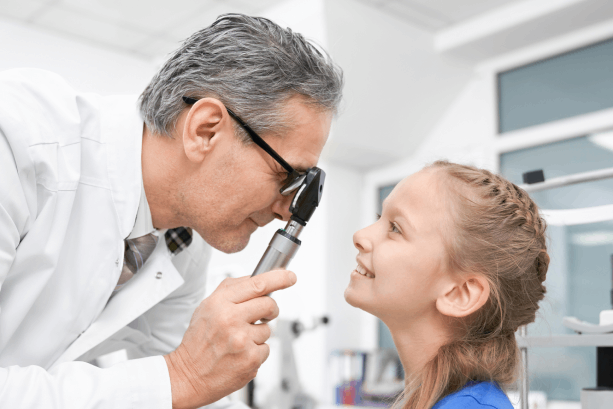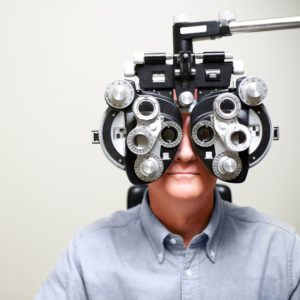Compassionate Eye Doctor: Professional Care for Riverside Residents
Compassionate Eye Doctor: Professional Care for Riverside Residents
Blog Article
The Comprehensive Eye Exam: What to Expect During Your Visit to the Eye Doctor
A check out to the eye physician for a thorough eye exam is even more than a routine examination; it is a vital action in safeguarding your aesthetic health. What specifically happens throughout the eye wellness evaluation, and exactly how does it affect the prescription process?
First Examination
The initial assessment throughout an eye exam acts as a critical foundation for understanding a person's visual wellness demands. This stage sets the tone for the entire evaluation procedure, enabling the eye doctor to gather important information regarding the patient's case history, lifestyle, and certain vision concerns. By carefully assessing any pre-existing problems, medications, or previous surgeries, the eye care expert can customize the exam to deal with individual requirements successfully.

In addition, the first consultation is a possibility for people to articulate any kind of concerns or concerns, promoting a collective connection with their doctor. This communication not just guarantees that the patient really feels notified and comfortable however also empowers them to take part proactively in their eye health and wellness management. Jointly, these discussions allow the eye doctor to create a customized assessment strategy, guaranteeing optimum treatment and specific medical diagnosis.
Visual Acuity Examination
Beginning the core elements of an eye assessment, the visual acuity test is made to analyze the intensity and clarity of a person's vision. This essential assessment helps identify just how well an individual can recognize letters or signs at a standardized distance, commonly utilizing a Snellen chart (Eye Doctor Optometrist). The graph consists of rows of letters that decrease in dimension from top to bottom, with the client positioned at a customary range of 20 feet
During the test, the person is asked to cover one eye and check out aloud the smallest line of letters they can see plainly. This process is duplicated for the other eye. The results are taped as a fraction, with 20/20 vision indicating typical aesthetic acuity-- where the person can see at 20 feet what an individual with typical vision can see at that distance.
The visual skill test likewise identifies possible refractive errors such as nearsightedness, hyperopia, or astigmatism, which could require rehabilitative lenses. By establishing a standard of visual performance, the test is an essential analysis tool that helps the eye care specialist in creating an appropriate therapy strategy customized to the client's distinct visual needs.
Eye Health Assessment
Following the aesthetic acuity examination, a thorough eye health assessment is performed to make certain the overall wellness of the eyes. This vital segment of the eye exam entails a detailed assessment of both the outside and inner frameworks of the eye.
With the usage of ophthalmoscopy or fundus photography, the retina, optic nerve, and blood vessels are carefully assessed. In lots of situations, student expansion is executed to boost exposure of the inner eye frameworks, although this might result in short-term light level of sensitivity for the person.
Furthermore, intraocular pressure is determined to screen for glaucoma threat. This is typically done making use of tonometry, which can find elevated stress degrees that could recommend potential damages to the optic nerve. Jointly, these analyses develop a comprehensive analysis to preserve ocular health and wellness.
Refraction and Prescription
Refraction is a sophisticated procedure performed by eye treatment professionals to determine the specific lens power required to fix refractive my website mistakes such as myopia, presbyopia, astigmatism, and hyperopia. The objective of this treatment is to examine how light bends as it passes via the eye, allowing the expert to establish whether rehabilitative lenses are required for improved visual skill.
Throughout the refraction procedure, the person is asked to browse a phoropter, a device that has different lenses. The specialist will methodically alter these lenses and ask the patient to contrast clarity between alternatives up until the most effective possible vision is achieved. This procedure is vital in crafting an accurate prescription that defines the proper lens power for spectacles or get in touch with lenses.
The prescription stemmed from this treatment not just optimizes vision yet additionally functions as a foundation for selecting ideal rehabilitative glasses. It is necessary to make certain that prescriptions are routinely updated, as modifications in vision can take place with time, stressing the significance of routine eye examinations. This precise focus to information assists maintain clear, comfy vision in day-to-day live.
Follow-Up Suggestions

Throughout a follow-up see, the eye doctor will certainly conduct a collection of examinations to review aesthetic skill and look for any type of adjustments in vision that could necessitate an upgrade to the prescription. Additionally, the follow-up provides a chance to review any discomfort or issues experienced with current glasses. Modifications can be made to ensure convenience and efficiency, whether through lens modification or structure modifications.
For clients with ongoing conditions such as glaucoma, diabetes-related eye issues, or macular degeneration, even more frequent follow-ups might be needed. These appointments are important for managing and potentially slowing down the progression of eye illness. Sticking to these suggestions can dramatically contribute to keeping aesthetic health and preventing long-term complications.
Conclusion
The detailed eye examination is an important procedure for maintaining visual wellness, encompassing a thorough assessment of medical history and vision worries. Trick elements consist of the visual acuity examination, which assesses sight quality, and the eye wellness assessment, which checks out the total condition of the eyes.
A see to the eye doctor for a detailed eye test is more than a regular check-up; it is a critical step in guarding your aesthetic wellness.Kicking off the core parts of an eye exam, the aesthetic acuity examination is created to examine the sharpness and clarity of a person's vision.Complying with the aesthetic skill examination, a comprehensive eye wellness analysis is conducted to make certain the total health of the eyes. like this These brows through allow the eye treatment expert to keep an eye on adjustments in vision, upgrade prescriptions, and evaluate the overall wellness of the eyes. Secret components consist of the aesthetic acuity test, which examines vision clearness, and the eye health and wellness evaluation, which analyzes the overall condition of the eyes.
Report this page